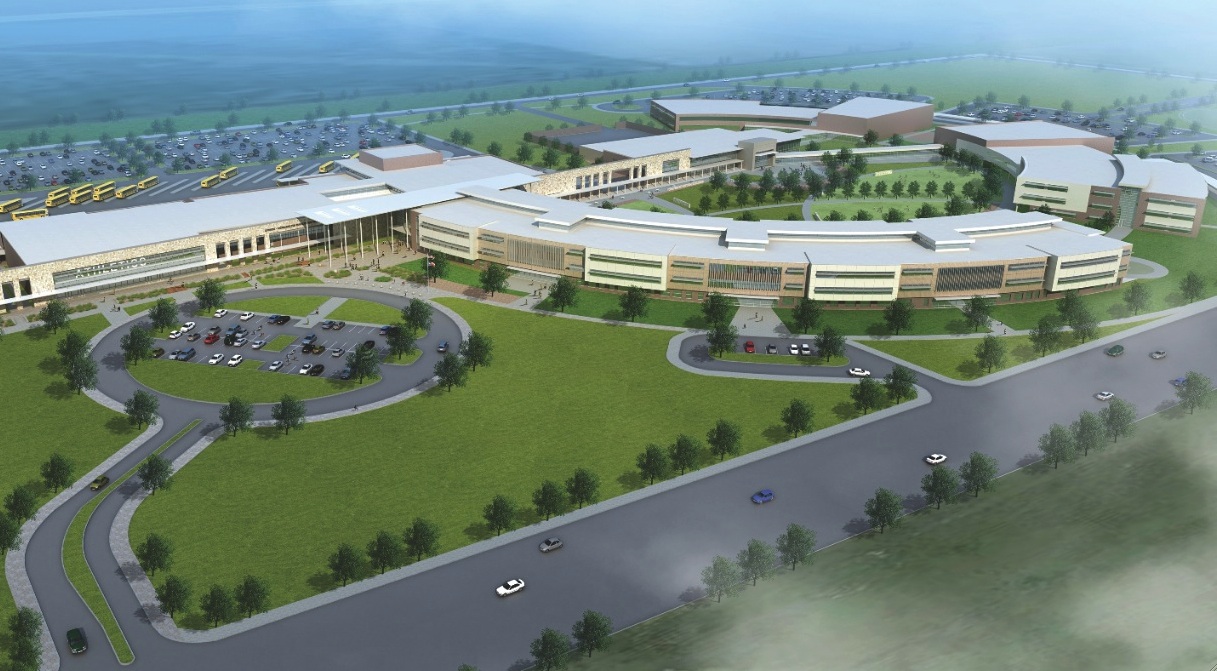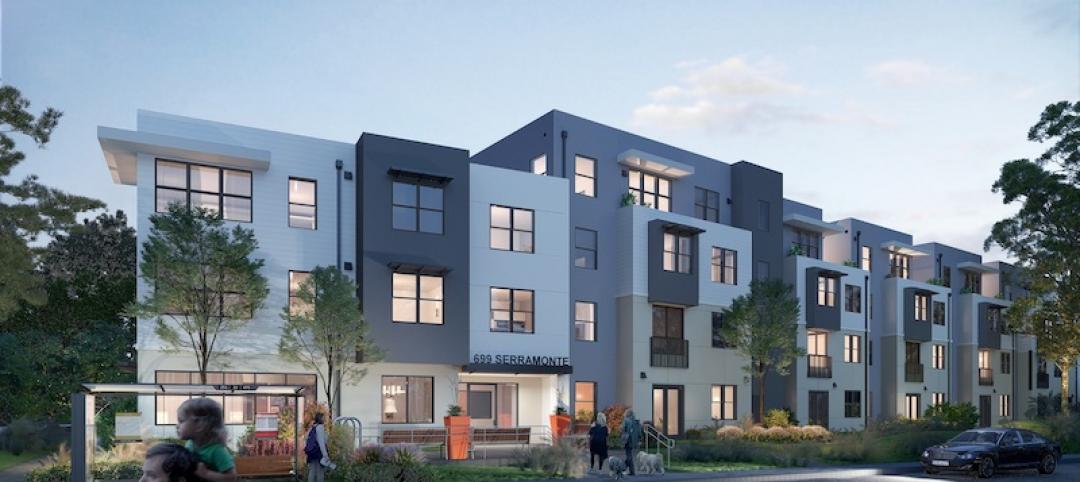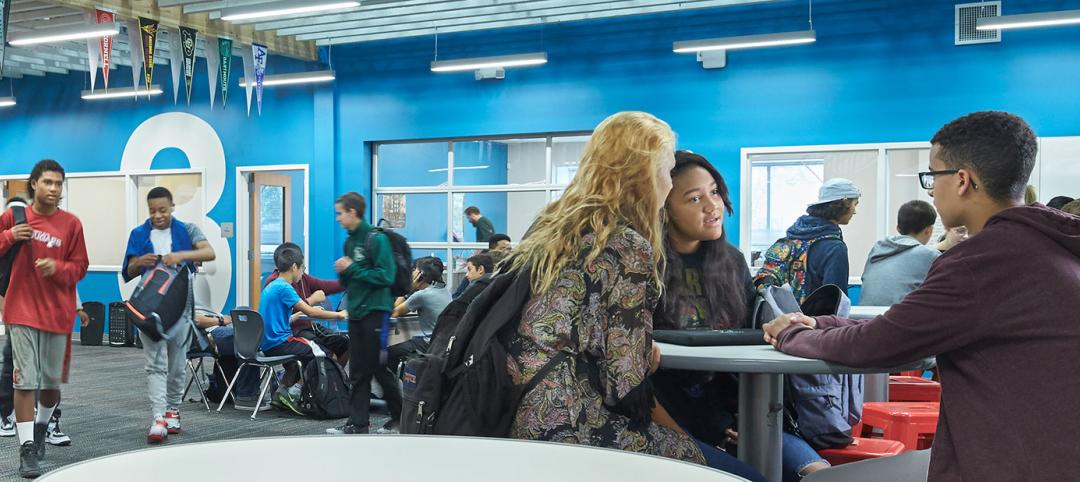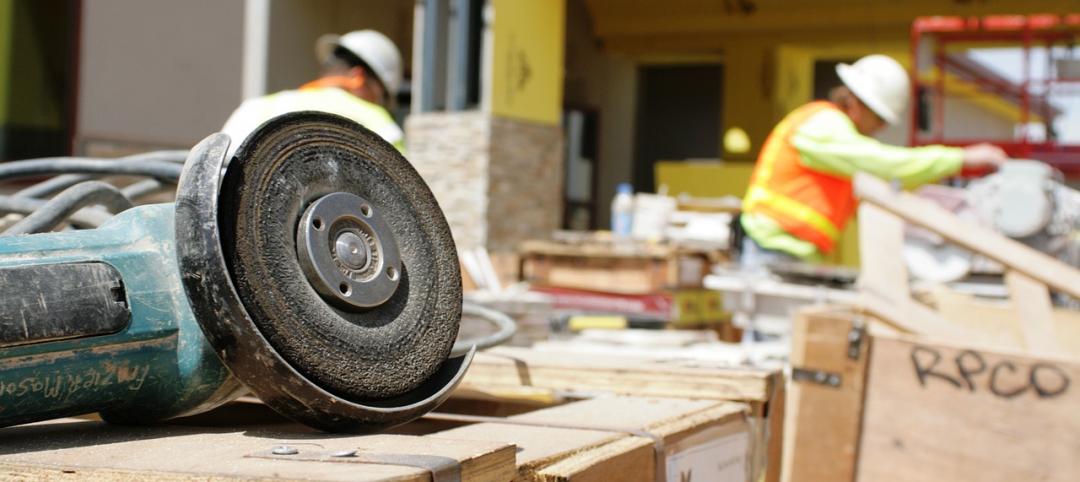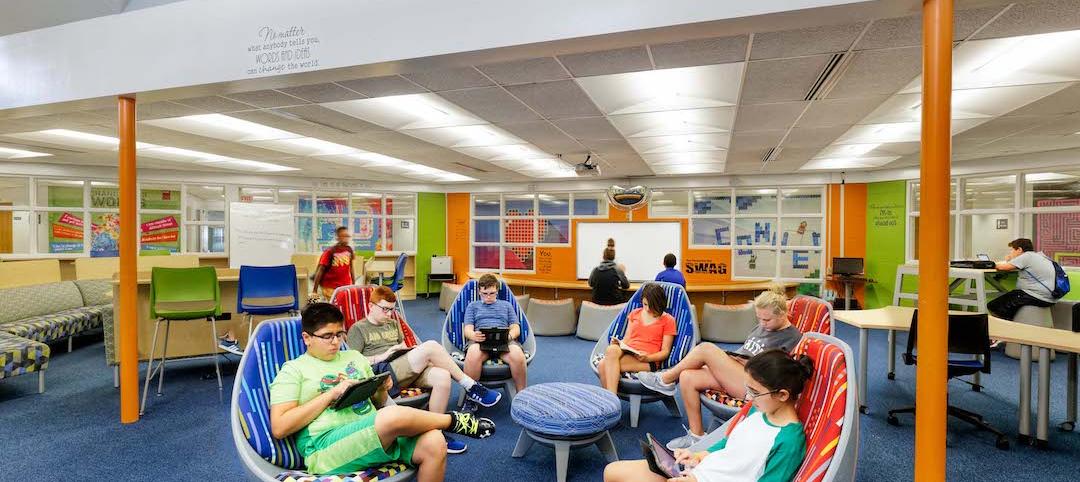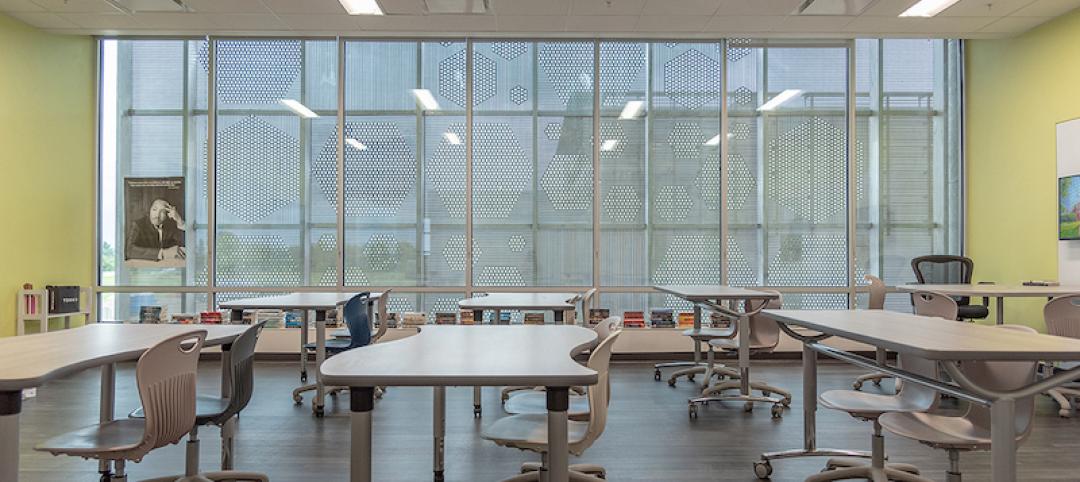Financing for school construction depends primarily on local bond referenda, so it’s difficult to make a blanket statement about national trends. However, Paul Abramson, Education Market Analyst for the School Planning & Management magazine, has estimated that school spending for project completions of construction, additions, and renovations hit $14.1 billion in 2014, or 5.4% more than the previous year.
AEC professionals say that, on a case-by-case basis, individual projects are being adequately financed. But many districts are struggling to have new construction and renovation keep pace with student population growth.
Montgomery County, Md., has seen its student count increase by nearly 12%, to 154,230, since 2007. More than 9,000 students are being taught in portable classrooms. The district expects its student count to reach 165,358 by 2020, according to the Washington Post. District Superintendent Joshua Starr has asked for $221 million to be added to the district’s six-year capital improvement budget, which would bring it to $1.75 billion.
“There are five million PK-12 students in Texas, and we’re gaining 100,000 students per year, which translates into a need for 100 campuses.” — Dan Boggio, President/CEO, PBK
In California, there’s a $2 billion backlog in applications for school-construction assistance from districts around the state, according to the Sacramento Bee. In January, construction and home-building groups launched a campaign to get a $9 billion school bond on California’s November 2016 ballot.
In other parts of the country, communities are backing school financing programs to modernize older buildings and keep up with student growth. “There are five million PK-12 students in Texas, and we’re gaining 100,000 students per year, which translates into a need for 100 campuses,” says Dan Boggio, President/CEO of architectural firm PBK. “School districts are very aware of this, and bond referendums [in Texas] have been passing by wide margins.”
For the past 15 years, bond financing has been steady in Wichita, Kan., where “we’ve done a lot of construction,” says Julie Hedrick, Facilities Division Director for Wichita Public Schools. This district is at the tail end of a $370 million bond passed in 2008, and currently is building a $60 million high school—its largest to date—and adding an auditorium and classrooms to two middle schools.
By a vote of three to one, voters in Shoreham, N.Y, recently approved the Shoreham-Wading River Central School District’s $33.5 million construction bond issue for a $48.5 million infrastructure and renovations program dubbed “The Renewal Project,” which will encompass all four schools operated by the district.
Orange County, Fla., last summer approved a half-cent sales tax extension that will help fund school construction program through the next decade. The county has about $300 million in school projects already in the works.
Under its latest school construction bond, valued at $748 million, the Frisco (Texas) Independent School District, purchased 16 school sites over the past five years. It has two high schools, two middle schools and one elementary school under construction. The Frisco ISD, which lies about 30 miles north of Dallas, will hit 50,000 students in 2015, and has been adding 3,000–3,800 a year.
A 2012 bond valued at $74.9 million should cover the six facilities that Western Maricopa County Education Center in Arizona expects to complete over the next few years. A $482 million bond passed in 2012 is allowing Portland (Ore.) Public Schools to modernize three high schools and rebuild a K-8 school.
Joseph DaSilva, who oversees school construction for the Rhode Island Department of Elementary and Secondary Education, notes that the General Assembly’s moratorium on construction could be holding up as much as $100 million in financing for school projects.
To stretch their budgets, some districts are being more selective about which projects to pursue. The East Baton Rouge Parish (La.) School Board—which funds projects through a one-cent sales tax that extends through 2018—in January postponed plans to spend $6.2 million to renovate two elementary schools in 2016.
With bond and tax financing always uncertain, school officials remain cautious about seeking alternate capital streams from the investment and corporate sources. Charles McKenna, CEO of the New Jersey School Development Authority, says public-private partnerships may have worked in higher education—he cites the University of Kentucky and Arizona State University—but he’s “not sold” on PPPs for construction projects in the Garden State.
Related Stories
Coronavirus | Mar 30, 2020
Learning from covid-19: Campuses are poised to help students be happier
Overcoming isolation isn’t just about the technological face to face, it is about finding meaningful connection and “togetherness”.
Education Facilities | Mar 3, 2020
Carisima Koenig, AIA, joins Perkins Eastman as Associate Higher Education Practice Leader
Perkins Eastman as Associate Higher Education Practice Leader
Multifamily Housing | Feb 26, 2020
School districts in California are stepping in to provide affordable housing for faculty and staff
One high school district in Daly City has broken ground on 122-apartment building.
Architects | Feb 24, 2020
Design for educational equity
Can architecture not only shape lives, but contribute to a more equitable and just society for marginalized people?
Giants 400 | Sep 4, 2019
Top 90 K-12 School Sector Construction Firms for 2019
Gilbane, Balfour Beatty, Turner, CORE Construction, and Skanska lead the rankings of the nation's largest K-12 school sector contractors and construction management firms, as reported in Building Design+Construction's 2019 Giants 300 Report.
Giants 400 | Sep 3, 2019
Top 140 K-12 School Sector Architecture Firms for 2019
DLR Group, PBK, Huckabee, Stantec, and VLK Architects top the rankings of the nation's largest K-12 school sector architecture and architecture engineering (AE) firms, as reported in Building Design+Construction's 2019 Giants 300 Report.
Giants 400 | Aug 30, 2019
2019 K-12 School Giants Report: 360-degree learning among top school design trends for 2019
K-12 school districts are emphasizing practical, hands-on experience and personalized learning.
Energy Efficiency | Aug 8, 2019
Florida’s first net-zero K-12 school opens
The building is distinguished by its rooftop solar array and its air-tight envelope.
K-12 Schools | Jul 15, 2019
Summer assignments: 2019 K-12 school construction costs
Using RSMeans data from Gordian, here are the most recent costs per square foot for K-12 school buildings in 10 cities across the U.S.
K-12 Schools | Jul 8, 2019
Collaborative for High Performance Schools releases 2019 Core Criteria Version 3.0 Update
The update adds credits to lower carbon footprints and to promote climate change resiliency.


